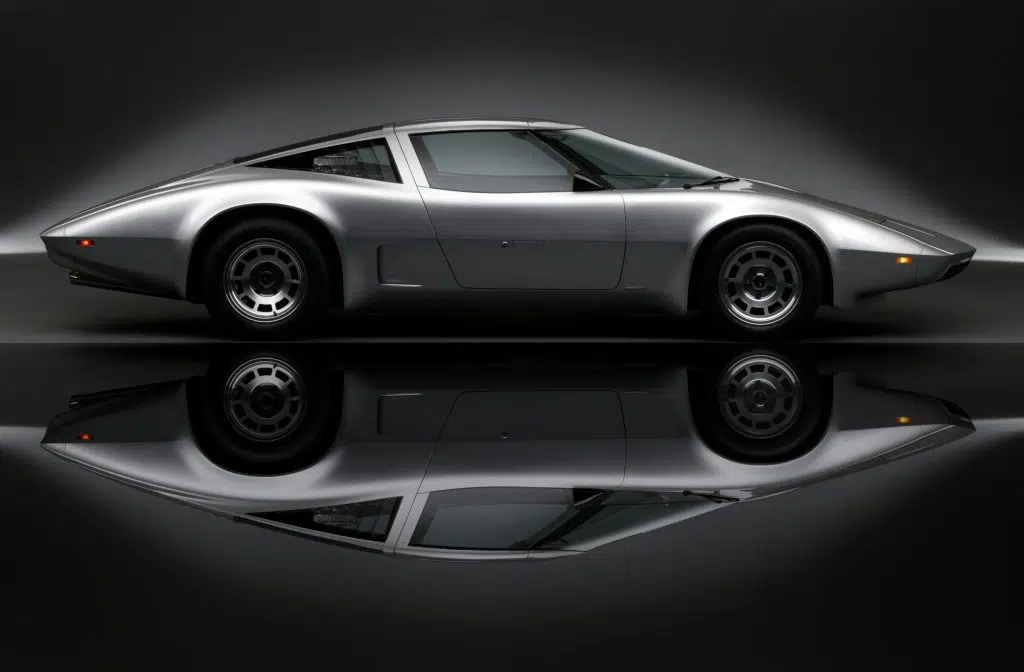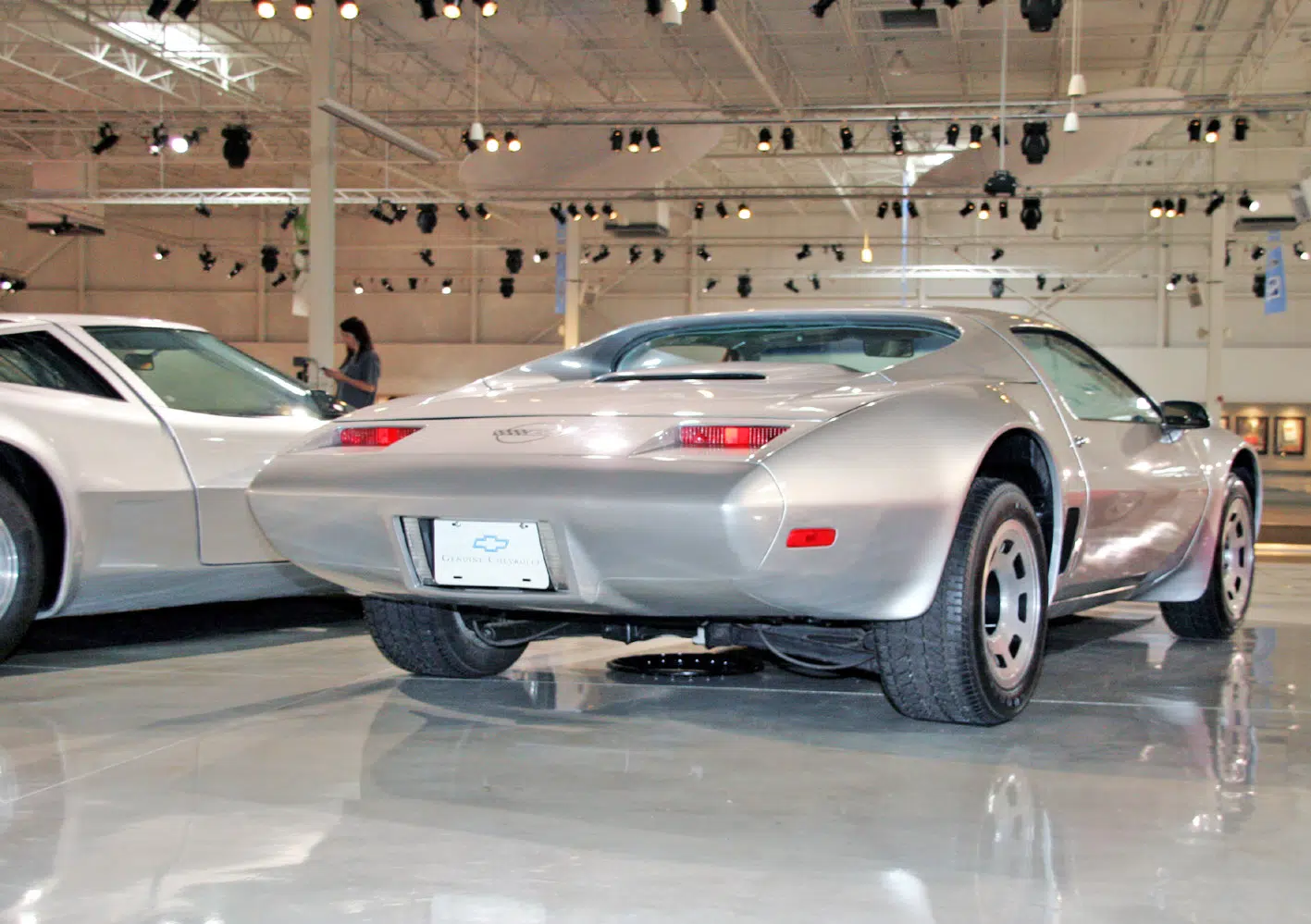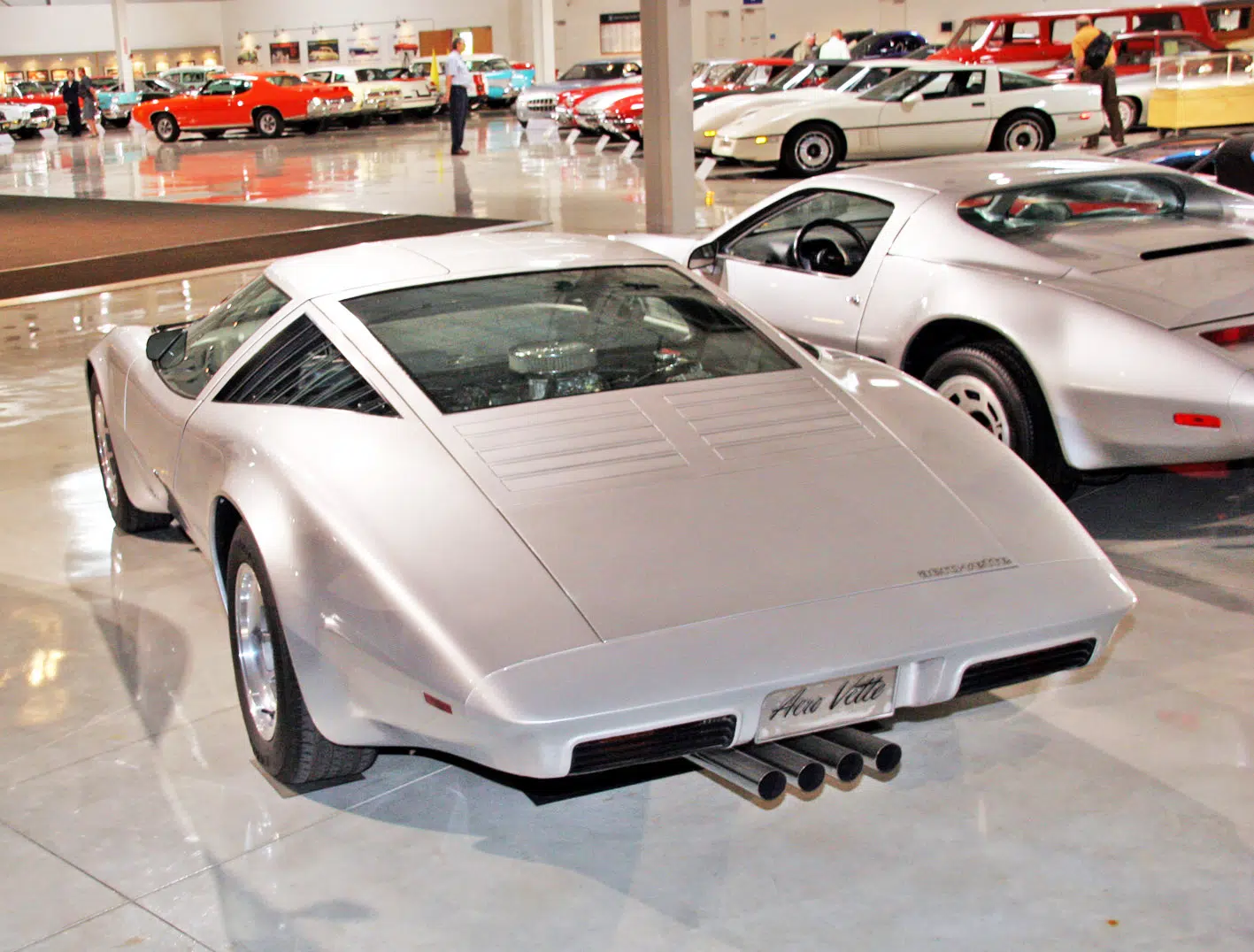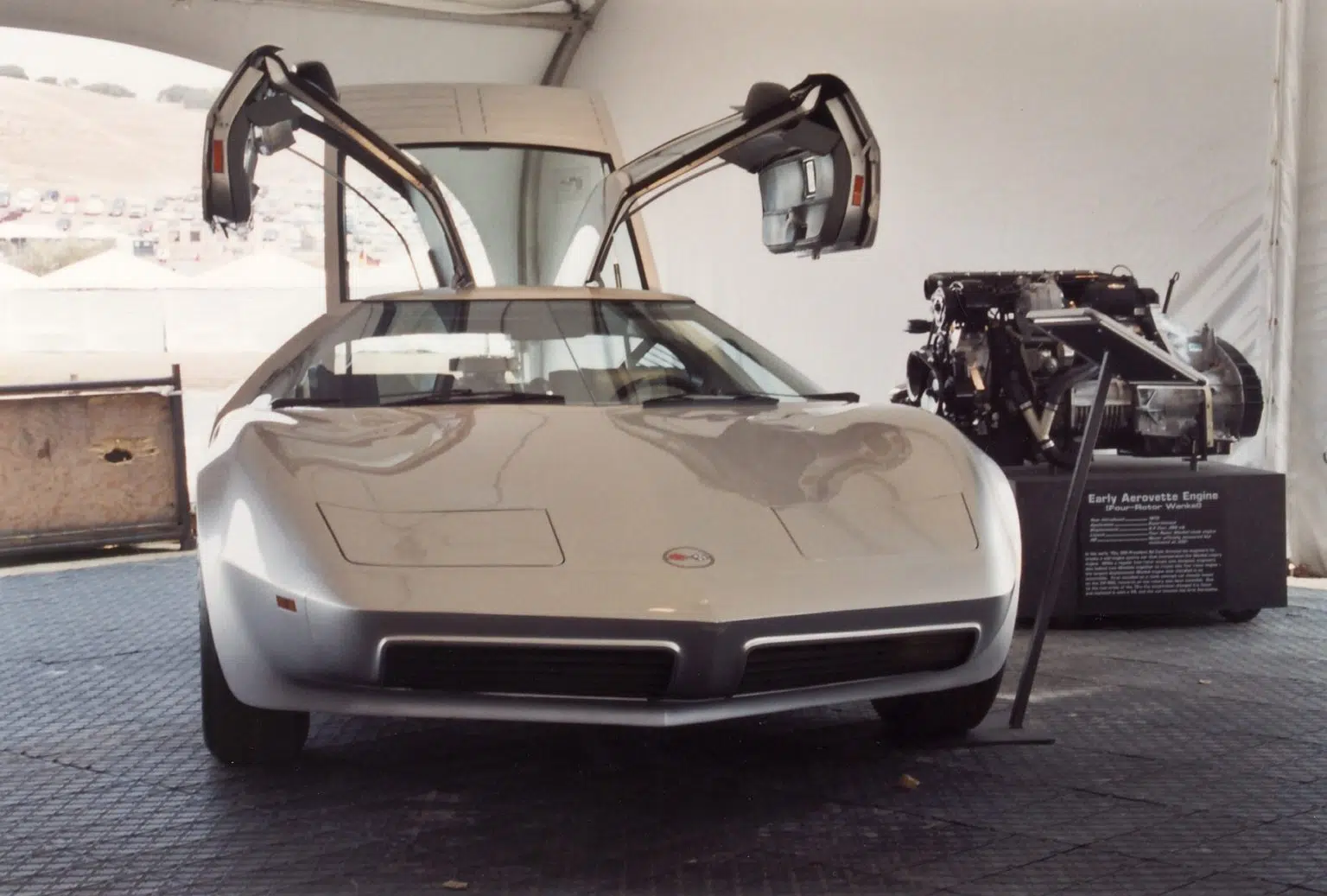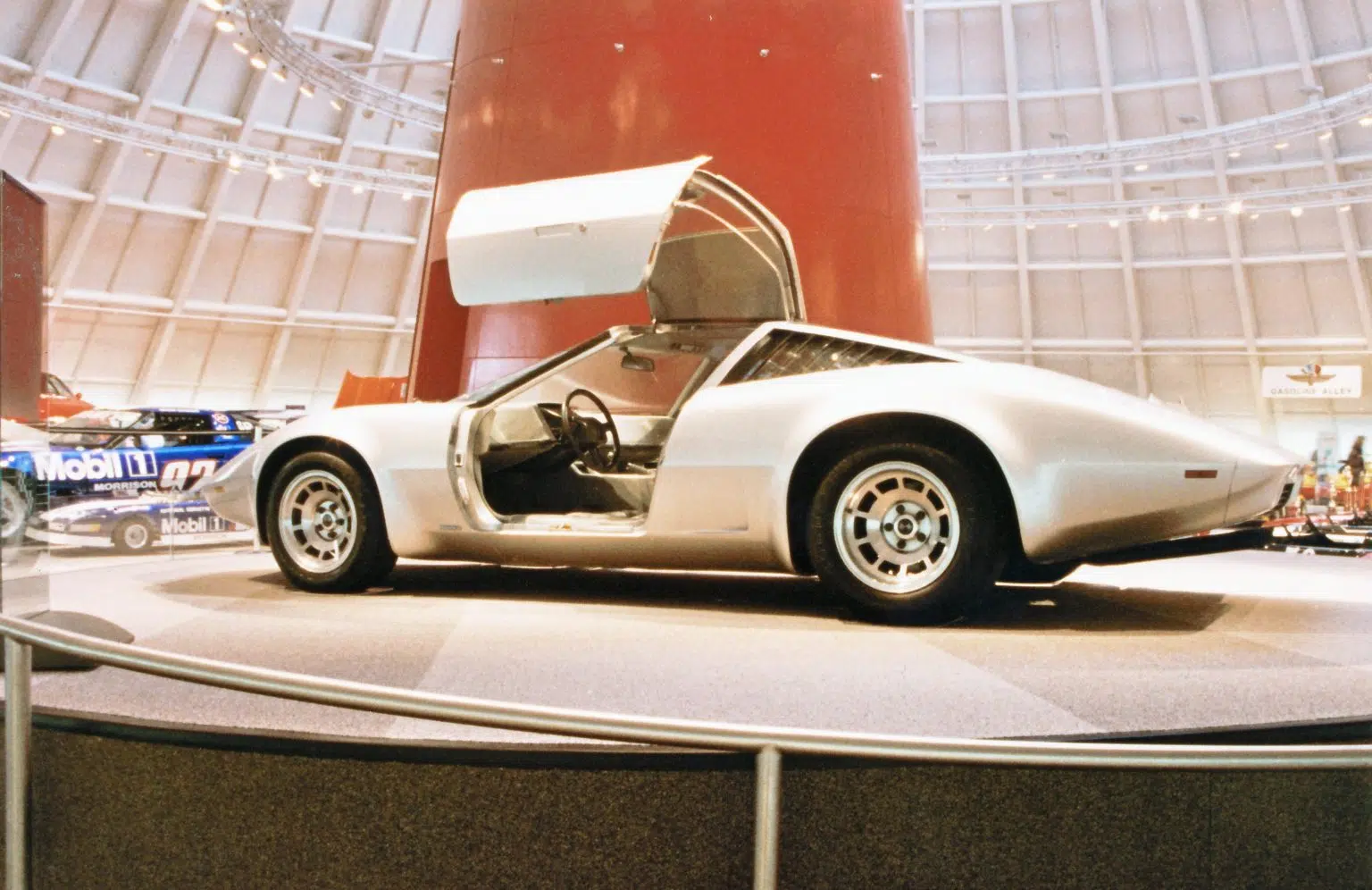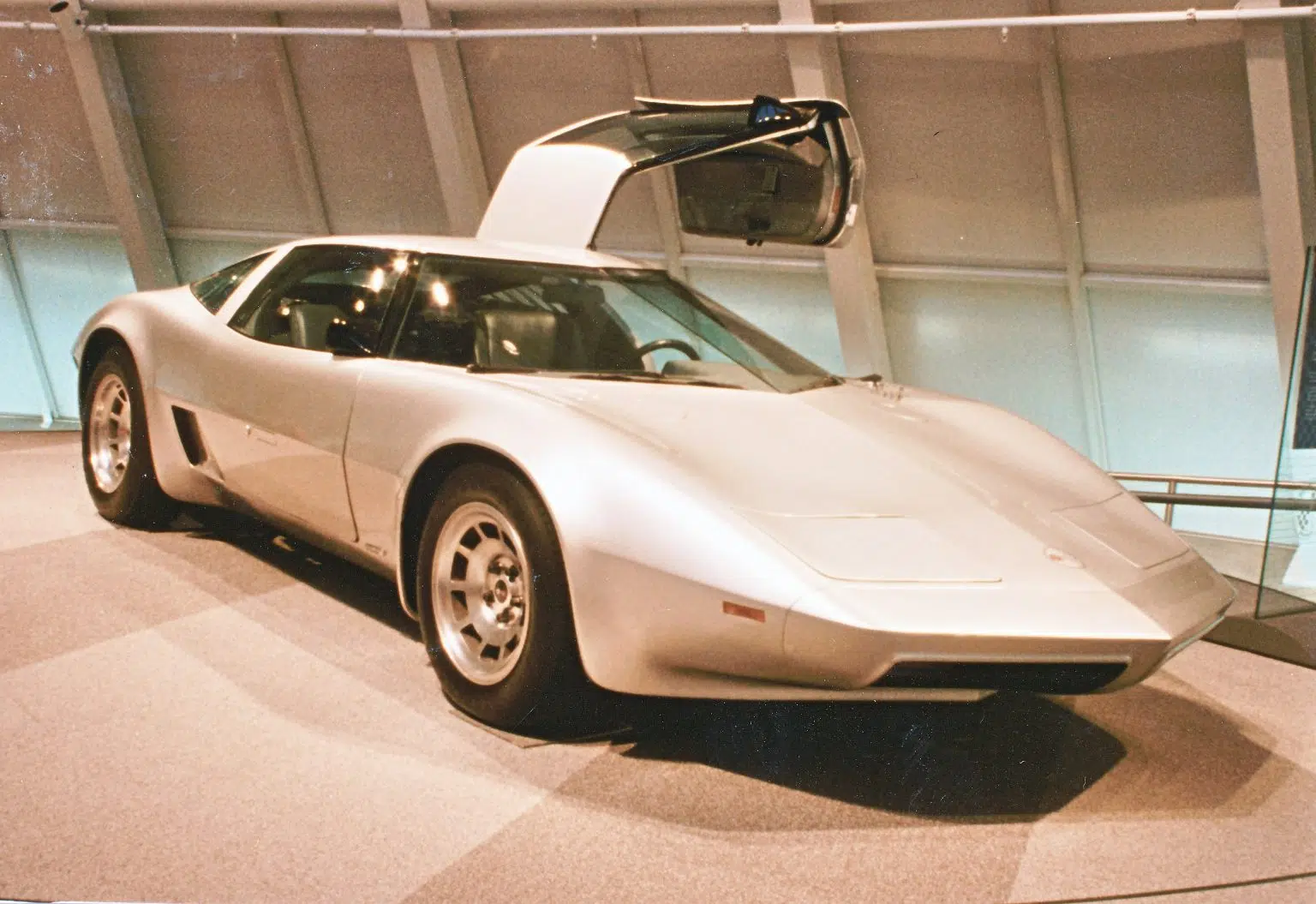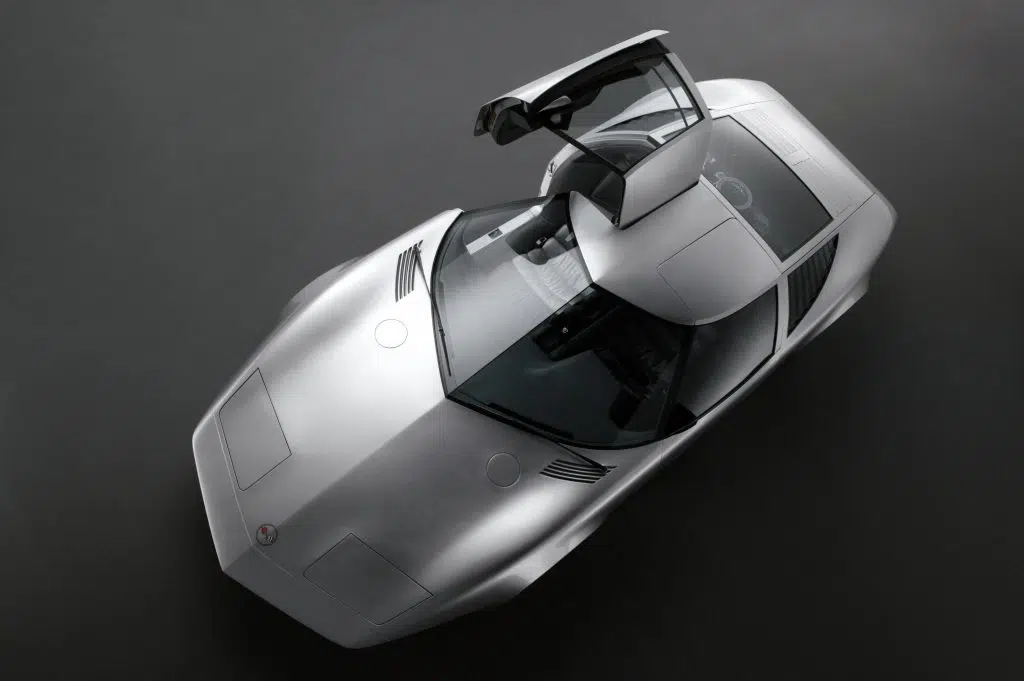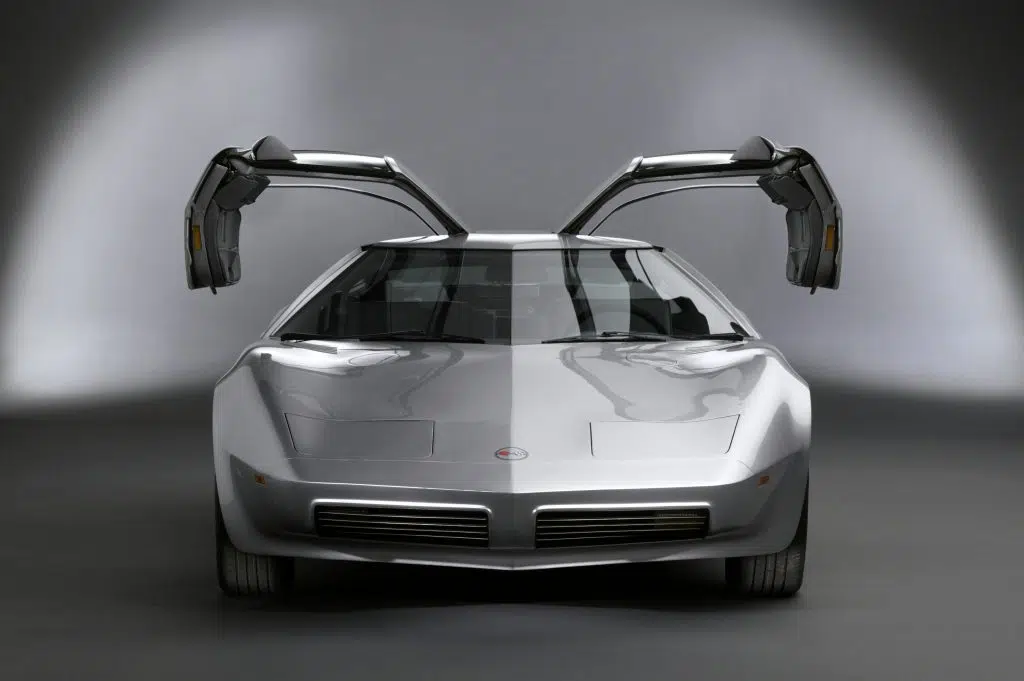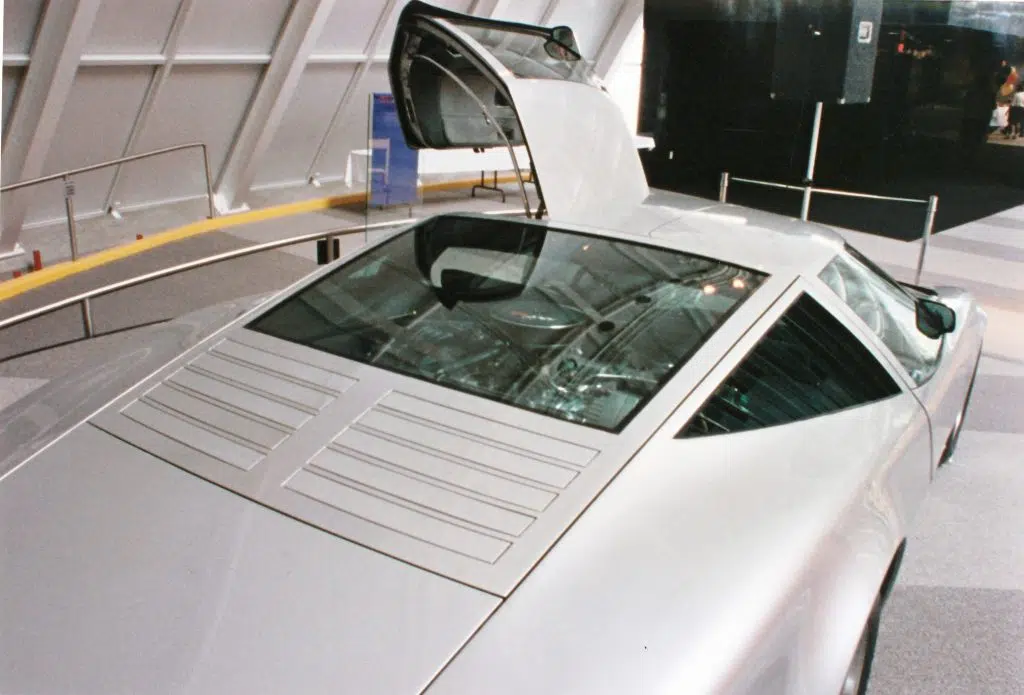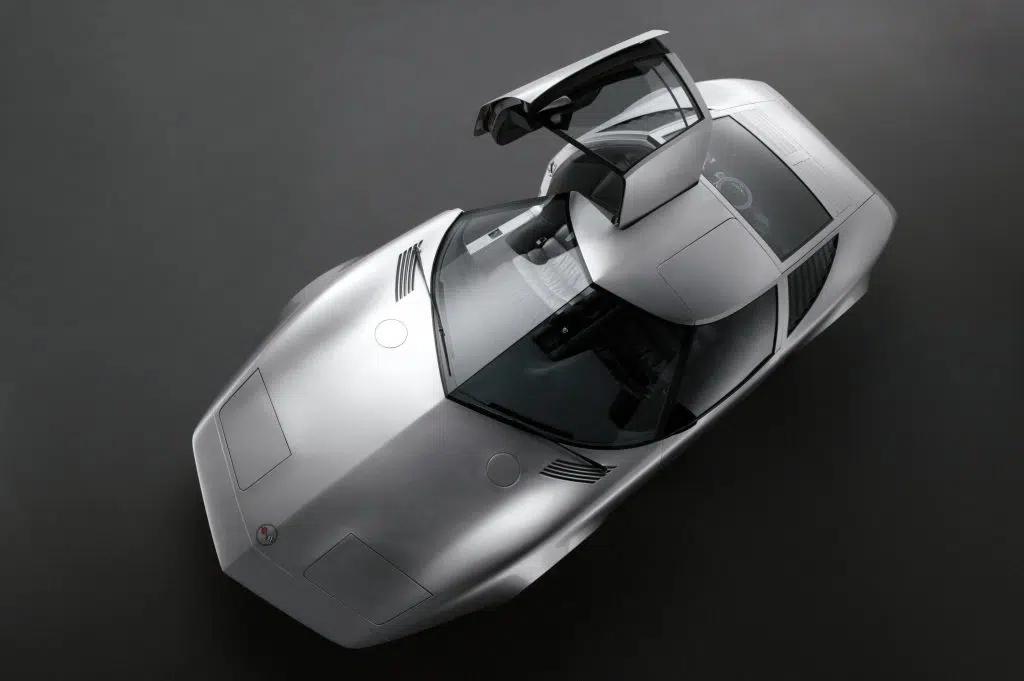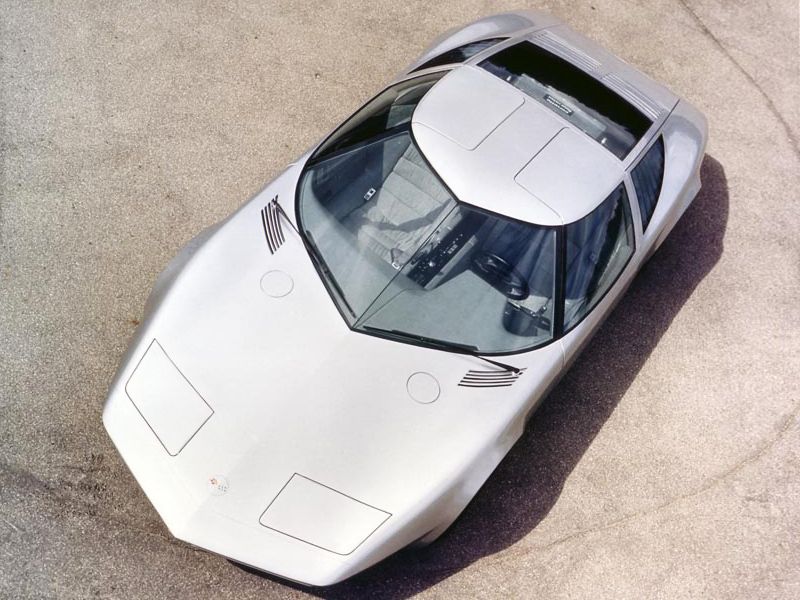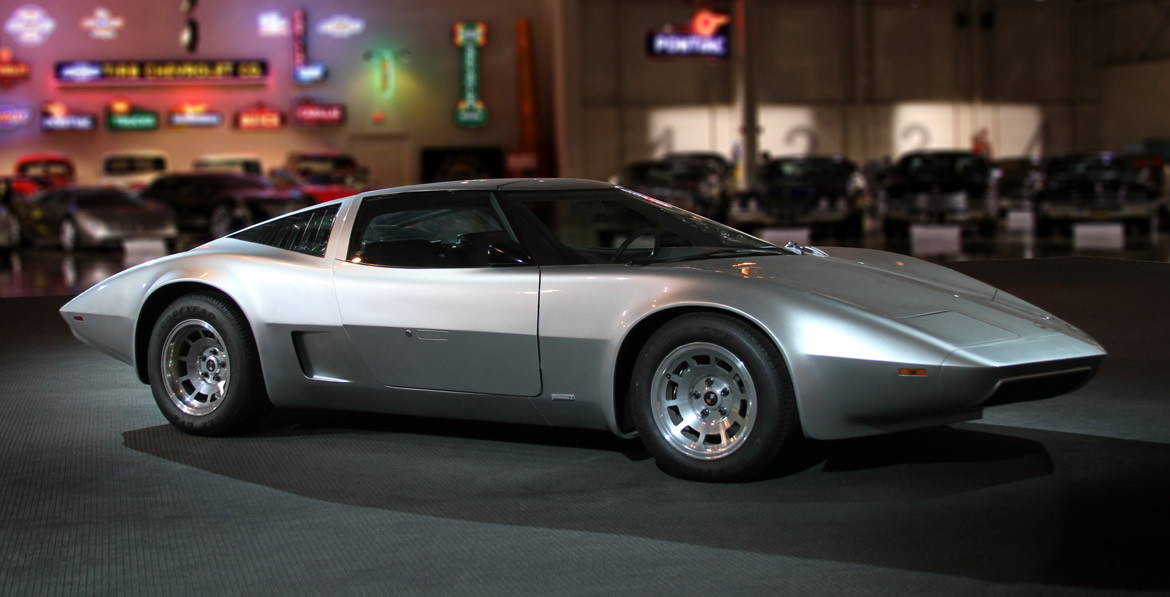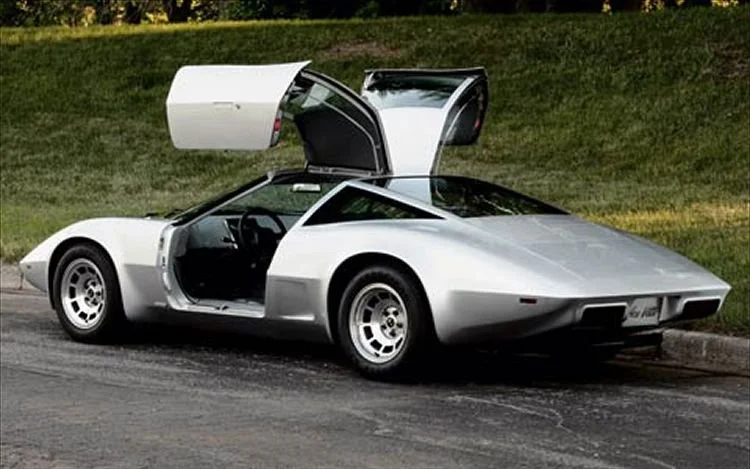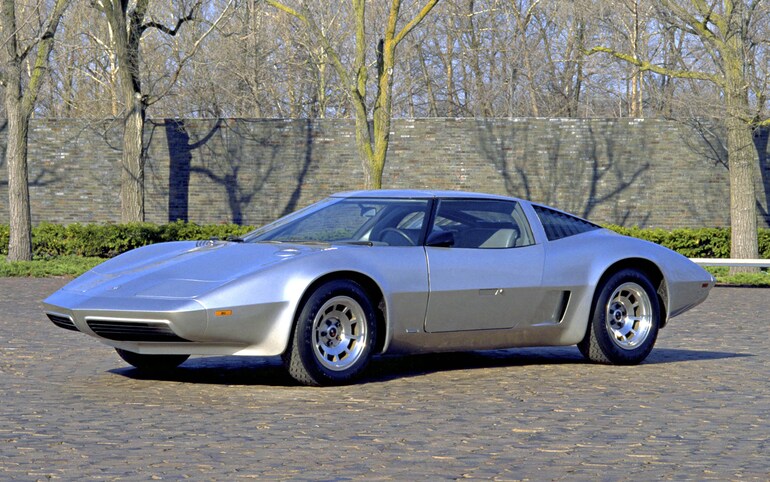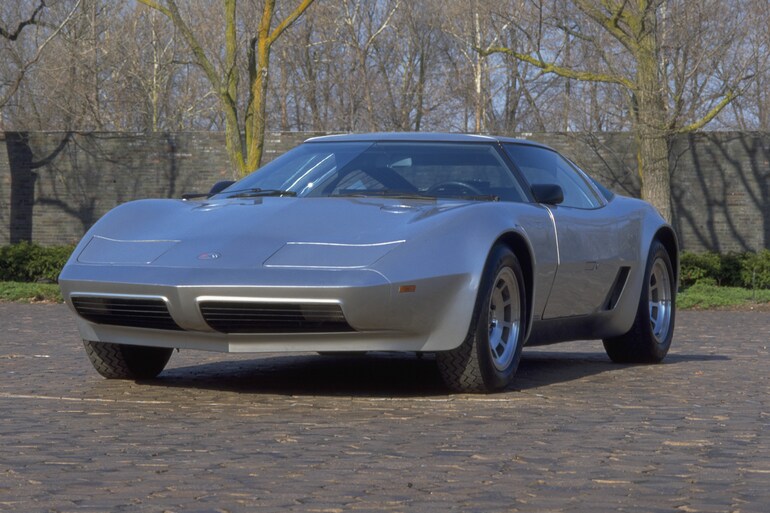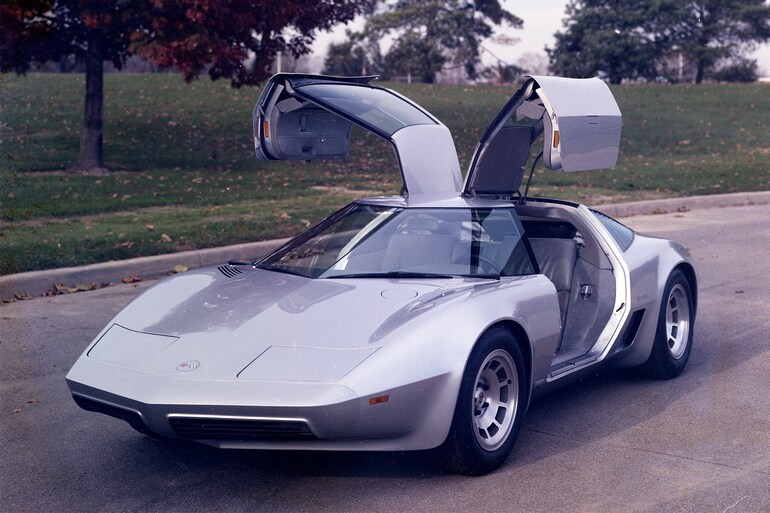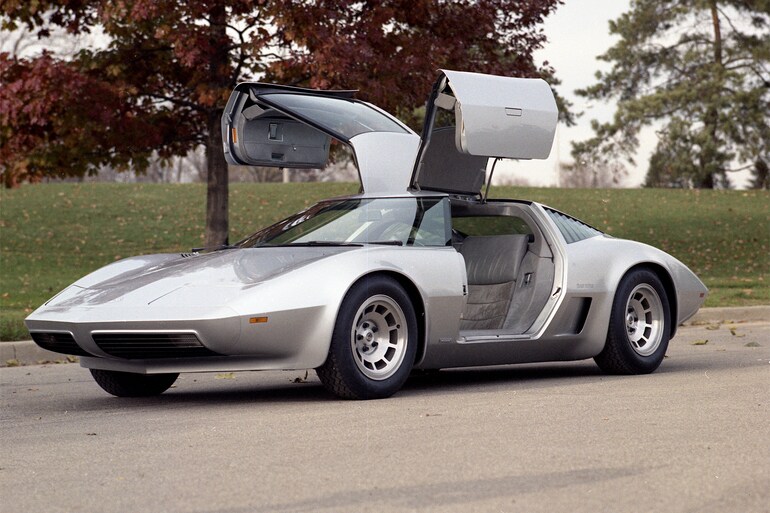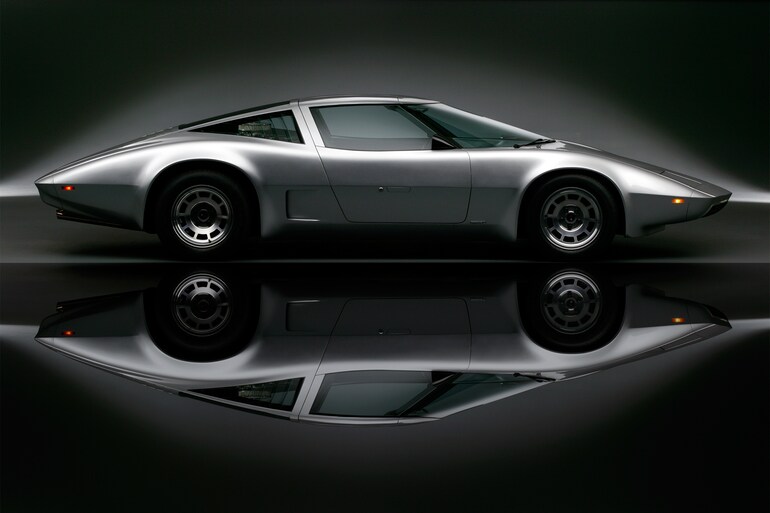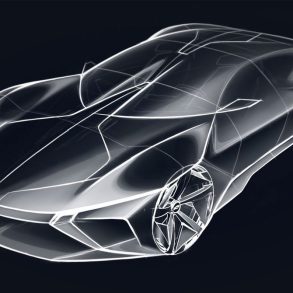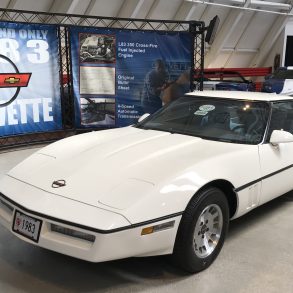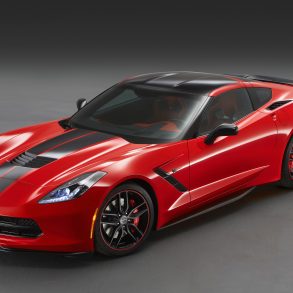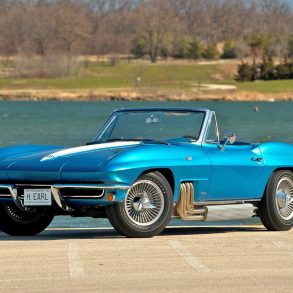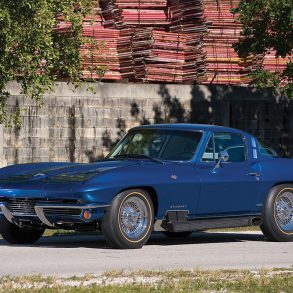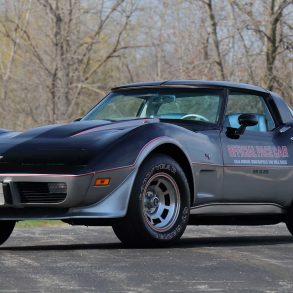1977 Aerovette Concept
In 1976, a year before his retirement, GM’s styling boss Bill Mitchell decided that maybe a mid-engine Corvette was the way forward after all, something the team had been thinking about for years. Despite having helped to shut down several of Arkus-Duntov’s previous mid-engine projects, Mitchell pulled the then three-year-old XP-895 mid-engine prototype out of storage.
While Duntov retired in 1975, the car continued to be refined. By 1976, the current C3 car was rapidly approaching its sell-by date, and the mid-engined car was beginning to look even more viable. Originally designed for GM’s licensed 420-hp, four-rotor experimental engine, Mitchell ordered the rotary removed and replaced with a 400-cubic-inch (6.6-liter) Chevy V-8. Corvette ditched the troublesome rotary engines to make the car more likely to get to production. Mitchell was a fan of Italian car design and mid-engined engine layouts. He rechristened the gullwing-door concept the Aerovette and sent it off to the auto-show circuit, where the media and Corvette enthusiasts alike once again wondered if a mid-engine Corvette would become reality.
In 1977, GM chairman Thomas Murphy gave the Aero-vette the green light. It was approved for production, and slated to be released in 1980. Despite being greenlit for 1980 production as the upcoming C4 Corvette, Arkus-Duntov’s replacement Dave McLellan decided for a number of reasons (cost and tradition among them) to stick with the Corvette’s tried and true front-engine configuration. Thus, the C4 Corvette we’re all familiar with came to be and while it wasn’t as innovative as many would have liked, it did return the Corvette to a performance-oriented car, dominating SCCA racing in the mid-1980s and culminating in the development of the 375-hp 1990 ZR-1. The Aerovette, meanwhile, would remain in the GM Heritage Collection where it is still kept today, an important part of mid-engine Corvette history and development as the concept finally reaches production with the 2020 C8.


